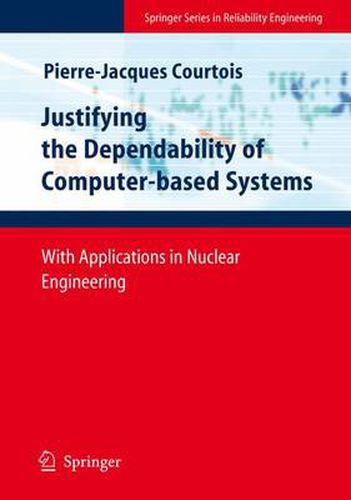Readings Newsletter
Become a Readings Member to make your shopping experience even easier.
Sign in or sign up for free!
You’re not far away from qualifying for FREE standard shipping within Australia
You’ve qualified for FREE standard shipping within Australia
The cart is loading…






This title is printed to order. This book may have been self-published. If so, we cannot guarantee the quality of the content. In the main most books will have gone through the editing process however some may not. We therefore suggest that you be aware of this before ordering this book. If in doubt check either the author or publisher’s details as we are unable to accept any returns unless they are faulty. Please contact us if you have any questions.
Safety is a paradoxical system property. It remains immaterial, intangible and invisible until a failure, an accident or a catastrophy occurs and, too late, reveals its absence. And yet, a system cannot be relied upon unless its safety can be explained, demonstrated and certified. The practical and difficult questions which motivate this study concern the evidence and the arguments needed to justify the safety of a computer based system, or more generally its dependability. Dependability is a broad concept integrating properties such as safety, reliability, availability, maintainability and other related characteristics of the behaviour of a system in operation. How can we give the users the assurance that the system enjoys the required dependability? How should evidence be presented to certification bodies or regulatory authorities? What best practices should be applied? How should we decide whether there is enough evidence to justify the release of the system? To help answer these daunting questions, a method and a framework are proposed for the justification of the dependability of a computer-based system. The approach specifically aims at dealing with the difficulties raised by the validation of software. Hence, it should be of wide applicability despite being mainly based on the experience of assessing Nuclear Power Plant instrumentation and control systems important to safety. To be viable, a method must rest on a sound theoretical background.
$9.00 standard shipping within Australia
FREE standard shipping within Australia for orders over $100.00
Express & International shipping calculated at checkout
This title is printed to order. This book may have been self-published. If so, we cannot guarantee the quality of the content. In the main most books will have gone through the editing process however some may not. We therefore suggest that you be aware of this before ordering this book. If in doubt check either the author or publisher’s details as we are unable to accept any returns unless they are faulty. Please contact us if you have any questions.
Safety is a paradoxical system property. It remains immaterial, intangible and invisible until a failure, an accident or a catastrophy occurs and, too late, reveals its absence. And yet, a system cannot be relied upon unless its safety can be explained, demonstrated and certified. The practical and difficult questions which motivate this study concern the evidence and the arguments needed to justify the safety of a computer based system, or more generally its dependability. Dependability is a broad concept integrating properties such as safety, reliability, availability, maintainability and other related characteristics of the behaviour of a system in operation. How can we give the users the assurance that the system enjoys the required dependability? How should evidence be presented to certification bodies or regulatory authorities? What best practices should be applied? How should we decide whether there is enough evidence to justify the release of the system? To help answer these daunting questions, a method and a framework are proposed for the justification of the dependability of a computer-based system. The approach specifically aims at dealing with the difficulties raised by the validation of software. Hence, it should be of wide applicability despite being mainly based on the experience of assessing Nuclear Power Plant instrumentation and control systems important to safety. To be viable, a method must rest on a sound theoretical background.